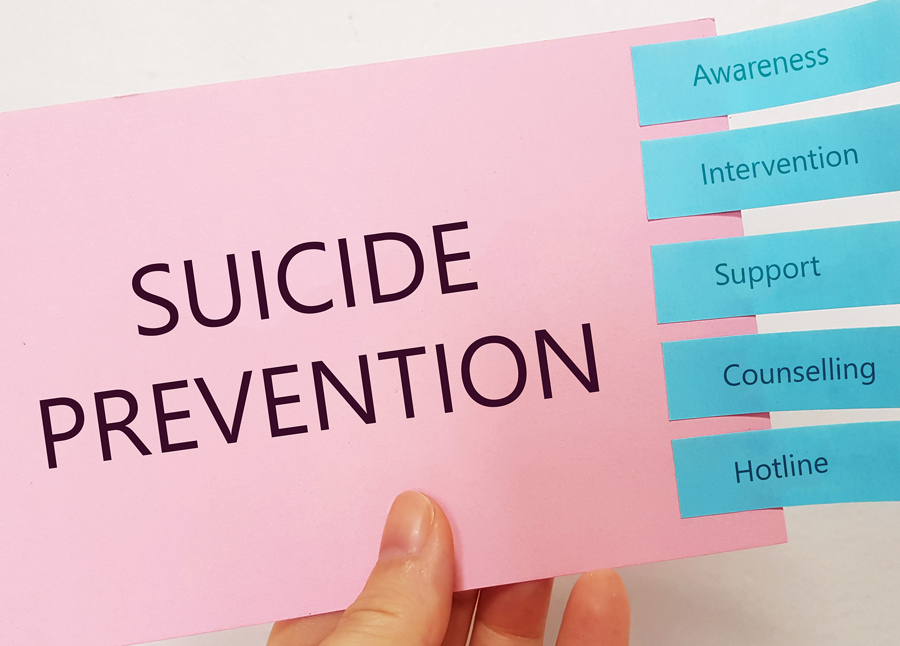After 18 months of disruption in their personal and academic lives due to the COVID-19 pandemic, local educational agencies are focusing on supporting students’ mental health in addition to learning recovery.On the heels of California children’s return to K-12 campuses for the fall term, educators and board members have an opportunity to bring attention to, and have thoughtful conversations on, an important topic: suicide prevention.
September is Suicide Prevention Awareness Month, which can provide a pivotal starting point for efforts that are needed year-round — perhaps now more than ever.
According to a June 2021 report from the Centers for Disease Control and Prevention, mental health-related emergency department visits in the United States for those ages 12-17 increased 31 percent from 2019 to 2020. Emergency department visits for suspected suicide attempts started to increase in the age group in May 2020, especially among girls. That trend has continued into 2021.
“During Feb. 21-March 20, 2021, suspected suicide attempt emergency department visits were 50.6 percent higher among girls aged 12-17 years than during the same period in 2019; among boys aged 12–17 years, suspected suicide attempt emergency department visits increased 3.7 percent,” according to the CDC.
Mental Health America’s report “Addressing The Youth Mental Health Crisis: The Urgent Need For More Education, Services, And Supports” found that mental health education “generates positive, meaningful outcomes” and highlighted a recent meta-review of research concluding that educating high schoolers with a mental health curriculum was one of the few policies proven to reduce suicide attempts and ideation.
“We know that youth are struggling, and they have more risk factors and stresses and strains than they’ve ever had,” said Stan Collins, the co-founder of the Directing Change Program and Film Contest and a suicide prevention specialist who often works with California county offices of education and other organizations to develop and implement strategies for mental health awareness. “Being a youth was already tough before any of this so [Suicide Prevention Awareness Month] is just another opportunity for us to really emphasize and empower our youth to understand that there are people that support them.”Additionally, Collins said now is a chance to promote trainings for educators, parents and youth. In September (and throughout the year), mental health and suicide prevention awareness efforts should be made in multiple formats like formal trainings or mental health clubs to reach the greatest number of students.
“Often times, suicide prevention in schools is looked at as a one-day awareness event and really, for us to not just reduce deaths but reduce that pain that these youth are feeling, it needs to be cooked into every aspect of the school setting,” Collins explained.
Many organizations offer resources and activities for school. Directing Change, for instance, has monthly Hope and Justice prompts for which students can submit personal expression pieces. September’s prompt is “you are not alone.”
“This month, learn about resources available to young people, and promote it through art, music, film or any other creative ways you can think of,” the organization’s website states.
LEAs can also look to their peers for inspiration. Collins said the county offices of education in San Diego, Marin, Santa Clara and Fresno are good examples. Butte County Office of Education recently hosted a virtual forum on youth mental health called “End the Silence.” San Ramon Valley Unified School District has curriculum in place including its “Signs of Suicide” prevention program curriculum for seventh-, ninth- and 11th-graders.
Overall, implementing comprehensive school-based suicide prevention strategies has the potential to reduce suicide attempts and deaths. As Collins explains, it’s a way to identify young people in emotional distress and help them ease their pain by connecting them to appropriate supports.
Of course, preteens and teenagers are most often likely to talk to their friends when they are struggling. For that reason, it’s key that youth have the skills to help each other and the knowledge of which trusted adults or organizations to refer them to.
A few places educators can look for up-to-date and age-appropriate resources and tool kits are Each Mind Matters and HEARD Alliance, which published the K-12 Toolkit for Mental Health Promotion and Suicide Prevention. Other organizations providing resources for mental health include nonprofits Bring Change to Mind, the National Alliance on Mental Illness, and peer-to-peer suicide prevention program Hope Squad. Additionally, Mental Health First Aid’s youth program is available for free to districts through CDE, according to a May webinar. Those interested can email YMHFA@cde.ca.gov.
CSBA’s sample Board Policy and Administrative Regulation 5141.52 – Suicide Prevention was updated in June 2021 to enhance stakeholder engagement and best practices in suicide prevention, intervention and postvention. GAMUT Policy subscribers looking for a customizable policy that is legally compliant and serves as a foundation for implementation can find it online.





